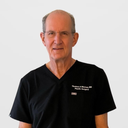Posted underRhinoplasty q&a
Does an open or closed rhinoplasty yield more permanent results, prevent open roof deformity, & what are the pros/cons each?
Doctors agreed: only remove dorsal hump - conflicting consults w/open vs closed. Closed pros: no scar, no tip disruption, great pis of tricky closed nose job from closed recommending dr. (unsure of post-surgery date on pics). Closed cons: Bones can move/won't be stable structures if not cut in right place, bone above nose is a little narrow, may need graft post-op if it narrows. Open pros: more visibility to make exact cut/angle bone to prevent open roof deformity. Open con: scar; tip disrupt.
Answers (16)
From board-certified doctors and trusted medical professionals
Dr. Bahman Guyuron, MD

Dr. Bahman Guyuron, MD
Board Certified Plastic Surgeon
Answer
Dr. Thomas A. Mustoe, MD, FACS

Dr. Thomas A. Mustoe, MD, FACS
Board Certified Plastic Surgeon
Answer
Dr. Eric M. Joseph, MD

Dr. Eric M. Joseph, MD
Board Certified Facial Plastic Surgeon
Answer
Dr. Michael A. Epstein, MD, FACS

Dr. Michael A. Epstein, MD, FACS
Board Certified Plastic Surgeon
Answer
Dr. Steven M. Denenberg, MD

Dr. Steven M. Denenberg, MD
Board Certified Facial Plastic Surgeon
Answer
Dr. Vincent N. Zubowicz, MD

Dr. Vincent N. Zubowicz, MD
Board Certified Plastic Surgeon
Answer
Dr. Stephen Prendiville, MD

Dr. Stephen Prendiville, MD
Board Certified Facial Plastic Surgeon
Answer
Dr. Catherine Winslow, MD

Dr. Catherine Winslow, MD
Board Certified Facial Plastic Surgeon
Answer
Dr. J. Phillip Garcia, MD, FACS

Dr. J. Phillip Garcia, MD, FACS
Board Certified Facial Plastic Surgeon
Answer
More Rhinoplasty Questions
See all Rhinoplasty Q&AWE SEND PRETTY
EMAILS
What’s trending? Who’s turning heads? Which TikTok myths need busting? We’ve got you. No fluff, no gatekeeping—just real talk. Get our free, unfiltered newsletter.
